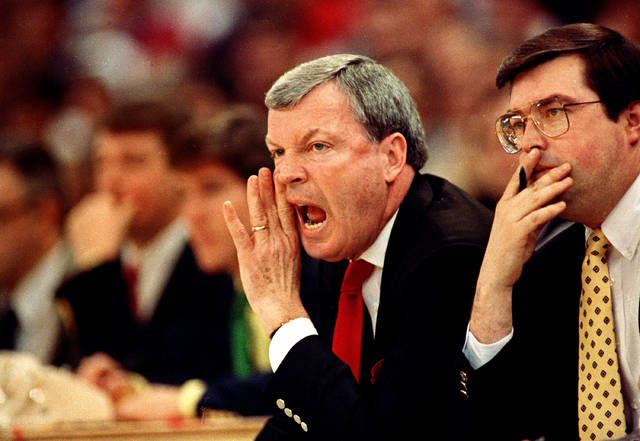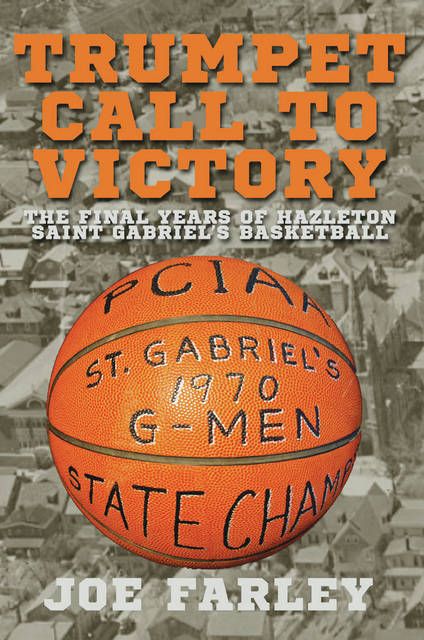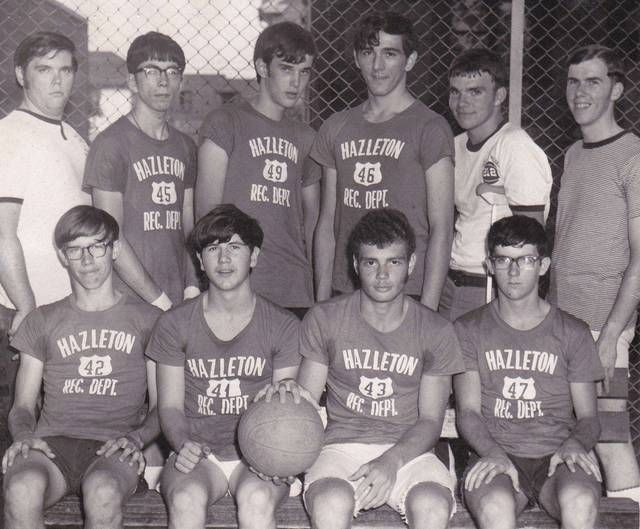Click here to subscribe today or Login.
“Hoosiers” is regarded as one of the best sports films in the history of cinema.
It focuses on a small-town high school basketball team in Indiana that overcomes adversity to win the state championship.
Hazleton had its own version of “Hoosiers” — the Saints at Saint Gabriel’s Parochial High School.
Inspired by the movie “Hoosiers,” author Joe Farley, a former player at Saint Gabriel’s, wrote his new book, “Trumpet Call To Victory: The Final Years of Hazleton Saint Gabriel’s Basketball.”
Farley will be signing his book from 2 to 4 p.m. Feb. 3 at The Arena Hub Barnes & Noble in Wilkes-Barre.
Farley talked about his upcoming book signing.
“I am really looking forward to it,” Farley said. “There are a lot of teams mentioned in the book from the Scranton/Wilkes-Barre area as well as other teams from the area that I hope come and visit.”
Farley recalls the six league and state championships that Saint Gabriel’s won from 1965 to 1970 before the school closed for financial reasons. Not only does his book talk about the David vs. Goliath matchups, but it also includes some of the great players and coaches from the area.
Saint Gabriel’s was the starting point for former Notre Dame men’s basketball coach Digger Phelps, who would go on to win 419 games at the college level before retiring in 1991.
In a tweet sent out by Phelps, he said, “St. Gabes was my first step to ND. They made it happen.”
“The hiring of Digger Phelps was a culture change for the region,” Farley said. “Most coaches back then were home-grown products. Most of the time they went to college to obtain a degree and come back to coach and teach.
“Digger’s affect on high school basketball in the area was felt long after he left.”
“He was a coach first, teacher second,” former St. Gabriel’s player Pete O’Donnell said.
Phelps was like Gene Hackman’s character coach Norman Dale, an outsider who had an interesting take on coaching. He would commonly press teams in any quarter whether his team was up or down, something the Anthracite League wasn’t used to.
Phelps guided the Saints to victory in the 1966 state championship in his lone season in Hazleton. He left to become an assistant basketball coach at the University of Pennsylvania.
Phelps’ successor, Jack Cryan, led the team to a state and Anthracite League championship in his two-year tenure with the team before departing to join the coaching staff at King’s College.
Farley described Cryan as a tough, aggressive coach who expected 100 percent from his players in practice and especially in games.
“He was inspirational and motivational, which gained him a lot of respect from his players,” Farley said.
Paul Hoffman, one of Saint Gabriel’s most notable players, helped bring the program to unbelievable heights. Hoffman was a part of the 2,000-point club. Farley cited an article that said, “what Hoffman was to Saint Gabriel’s is what Jerry West was to the Los Angeles Lakers.”
“He was an all-around fundamentally sound player that could score, rebound and handle the ball,” Farley said.
Hoffman was recruited by many top colleges, even locally at King’s, and chose to play college basketball at St. Bonaventure.
One of the biggest rivalries that Saint Gabriel’s had was within the city of Hazleton against Hazleton High.
“It was an intense inner-city rivalry,” Farley said. “The kids knew each other since grade school, they played against each other on the playgrounds. Even the townspeople were really into the game.
“Because Hazleton was exponentially larger than Saint Gabriel’s, when both teams played one another they were more concerned with losing to Saint Gabriel’s because of the low enrollment.”
Farley, the starting point guard on the last championship team in 1970, believes that his unit may have been the most complete team to win a title.
He hopes his childhood experiences in the book gets this point across.
“One of the biggest advantage kids had when I was a kid in the 1960s was that we didn’t have much structure or adult guidance, we had to develop problem-solving skills on our own,” Farley said. “In today’s world, with all the adult supervision and emphasis surrounding children’s organized sports, the children are somehow missing out on that.”







